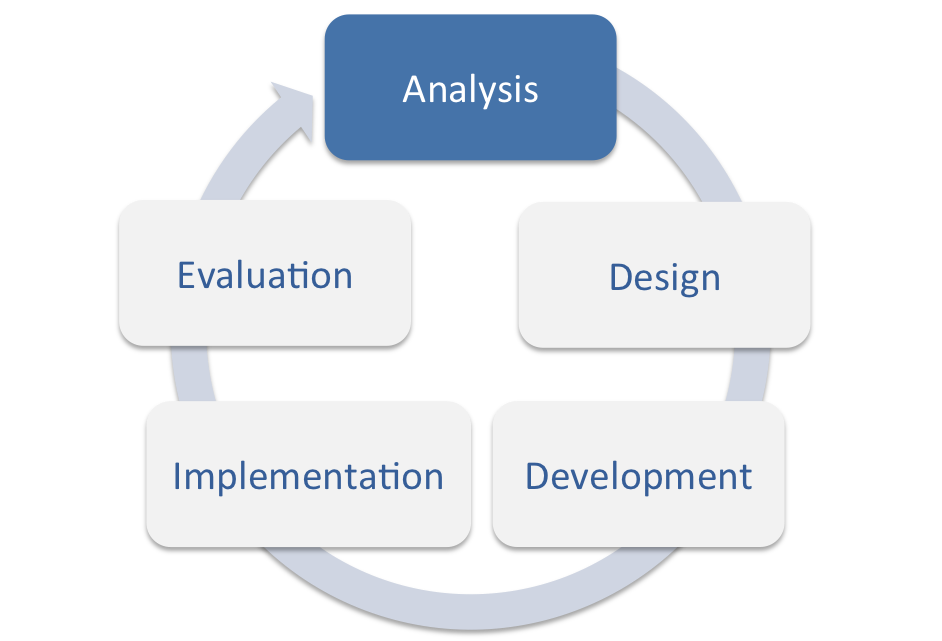Analysis

The ADDIE framework has a long history of use, emerging from post-World War efforts by the United States military to create an intelligent, flexible instructional design model for training personnel, it has subsequently been adopted as a helpful resource by colleges and universities around the world. Although its original form as developed by the military has been criticized for being too linear and rigid in nature, the essential phases outlined within the framework – ANALYSE, DESIGN, DEVELOP, IMPLEMENT and EVALUATE – have subsequently been conceived of as open and iterative and the ADDIE framework now serves as a useful guideline for the components of course design that curriculum developers benefit from considering when creating a course. For this reason, we are going to rely on the ADDIE framework to structure our work on building components of an experiential education course so that you will gain some direct experience of what it is like to plan an experiential course.
One of the helpful aspects of the ADDIE framework is that it is relatively flexible, allowing for its application to a variety of instructional forms including experiential learning. It also supports the implementation of the principles of learning outcomes-driven backward design processes and constructive alignment of learning outcomes, assessment measures and teaching and learning activities.
During the analysis phase of designing any course, including an experiential learning course, it is productive to consider the purpose that the course will serve in the broader context of the program(s) of study for learners and anticipate the ways in which the learning experiences can be engineered to ensure that the intended learning outcomes can be met. The analysis phase also affords an opportunity to think through all of the detailed planning that benefits the students, the instructor and the community service or industry partner.
In developing this course, we interviewed a number of instructors at Niagara College and Brock University. Segments of these videos are embedded in each of the ADDIE chapters of this book, along with course artifacts (outlines, assignment guides, forms, etc.)
Analysis: Linda Roote,
Niagara College Design Program, Community Partnerships
Analysis: Mary Beth Raddon,
Brock University Sociology, Service-learning
Mary Beth Raddon’s


